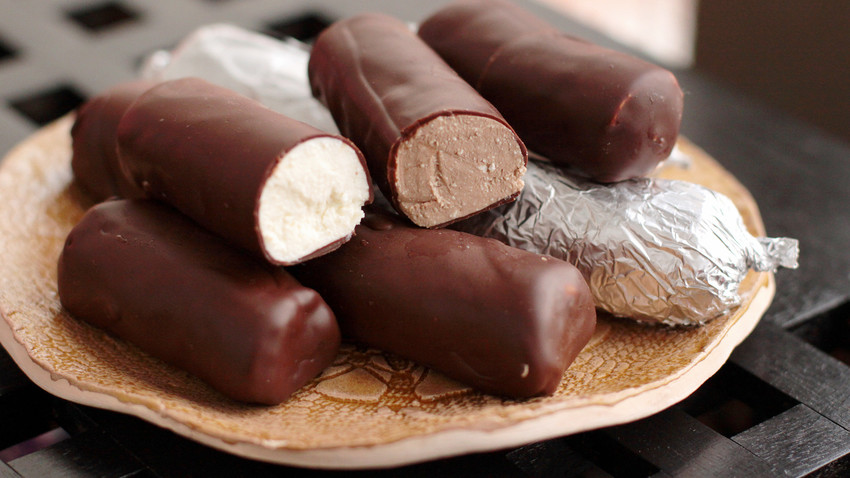
Some parents pretended those chocolate-glazed cottage cheese bars were Eskimo pie ice creams during the time of food shortages in the Soviet Union
Victoria DreyI can remember chocolate glazed cottage cheese bars as long as I remember myself: I’ve loved these treats since early childhood and I still frequently enjoy them as a sweet snack. Usually, I have them in the mornings; the main ingredient – tvorog, a Russian type of cottage cheese – is in general one of the most popular breakfast meals. In Russian, a glazed curd bar is affectionately called “syrok,” which literally means “a small bar of soft cheese”.
Mass production of curd bars started in 1950, and they soon became popular in Moscow and Leningrad. Then they spread across the USSR, but in some regions they were hard to find. Initially, there were curd bars with vanilla, with cocoa and with raisins. Since the late 1990s, they started to produce more variations: cookie bites, apricot, strawberry jam and boiled condensed milk.
It is peculiar that curd bars are something that people always buy in grocery stores, and never make at home because they are considered to be too complicated. In fact, however, tvorog bars are one of the easiest treats as far as recipes go: the base consists of only 4 simple ingredients, which are tvorog or curd, butter, powdered sugar and vanilla. Cooking at home, you can also make them more rich or more healthy, depending on the cottage cheese fat content: the more fatty your tvorog, the richer the taste. But feel free to go for fat-free curd. Another great aspect about homemade bars is that you can make many and store them in the refrigerator for weeks, and then unfreeze some in the fridge right before eating.
Personally, for me there is nothing like plain vanilla and cocoa tvorog bites – the recipe is just as simple as delicious.
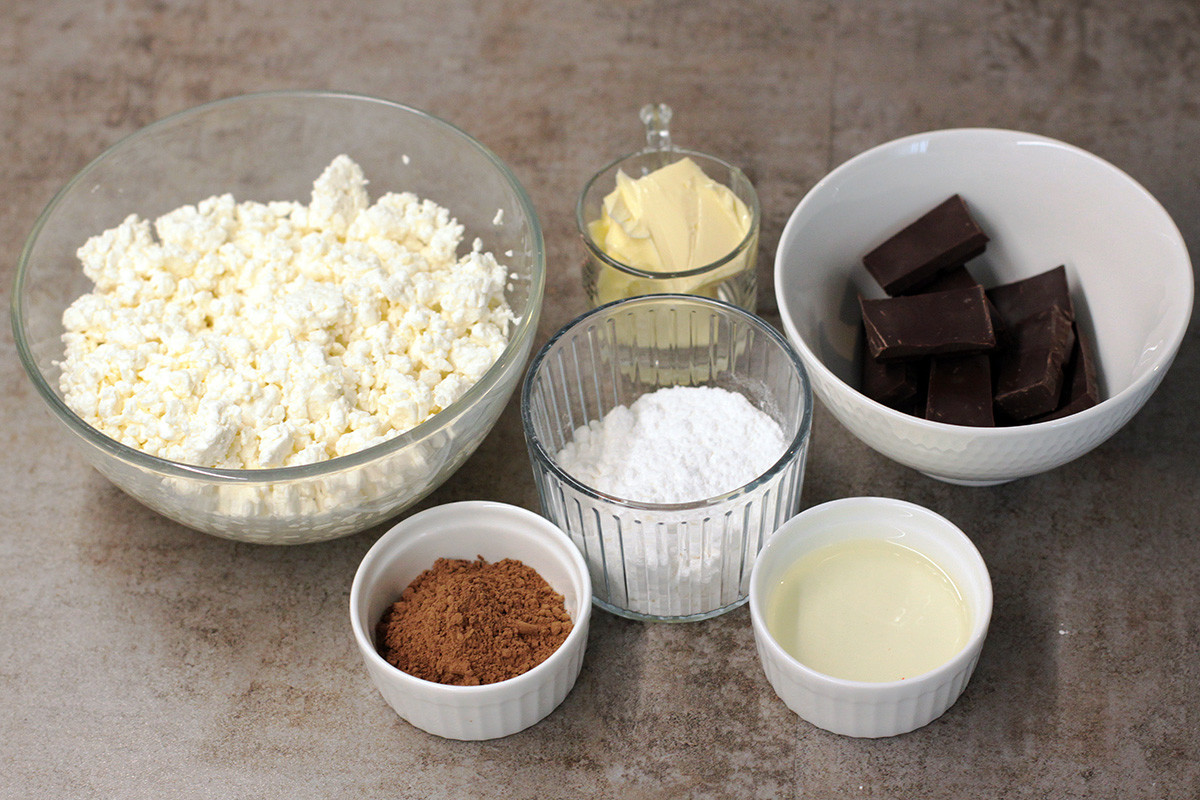
1. In a large bowl mix almost all the ingredients: tvorog, softened butter, powdered sugar, vanilla extract and salt. I prefer 9% fat tvorog for my cottage cheese bites. Next, work the mixture with an immersion blender so that you get a nice and very creamy paste-like consistency.
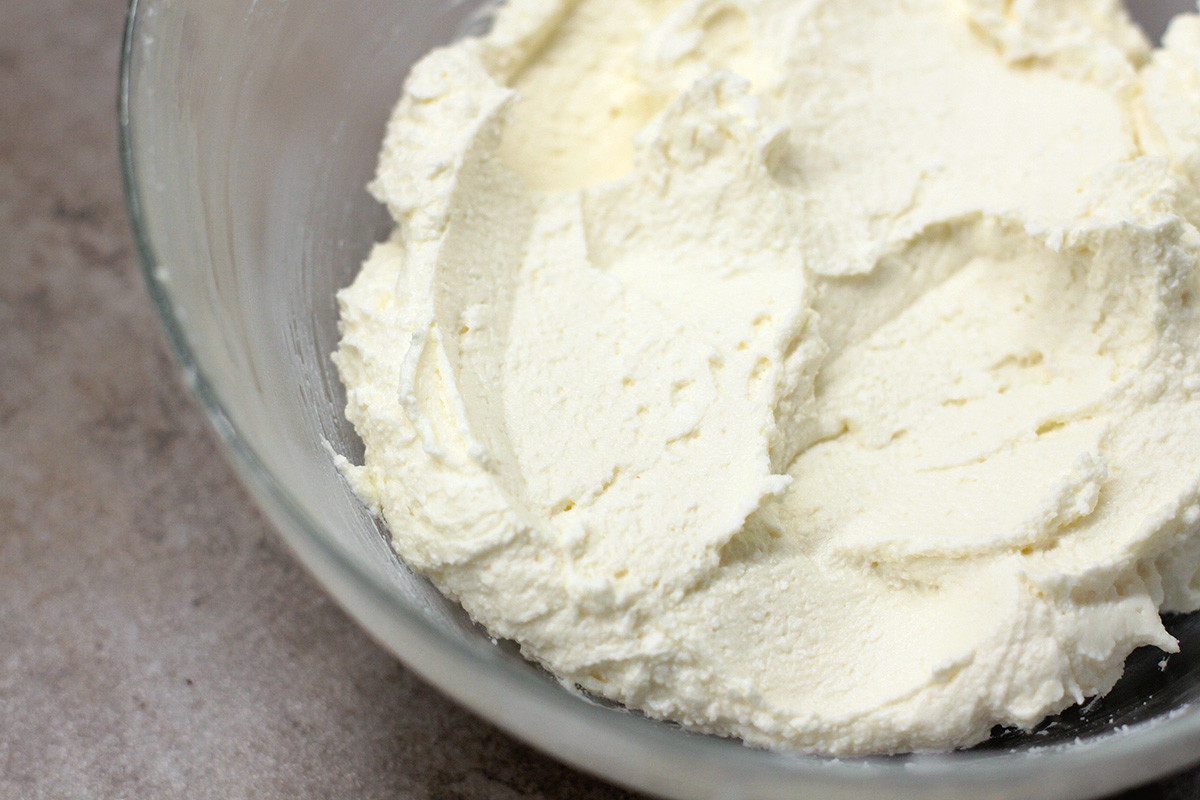
2. Now, divide the mixture in two and add cocoa powder in half. Stir until smooth.

3. The easiest way to make the bars is using a piping bag with the biggest round nozzle or even a clear plastic bag with a trimmed edge. Fill any two bags with vanilla and cocoa tvorog paste, and squeeze 5-7 cm long bars on a cutting board covered with plastic wrap or a sheet of parchment. Leave in the refrigerator for around 2-3 hours to set.
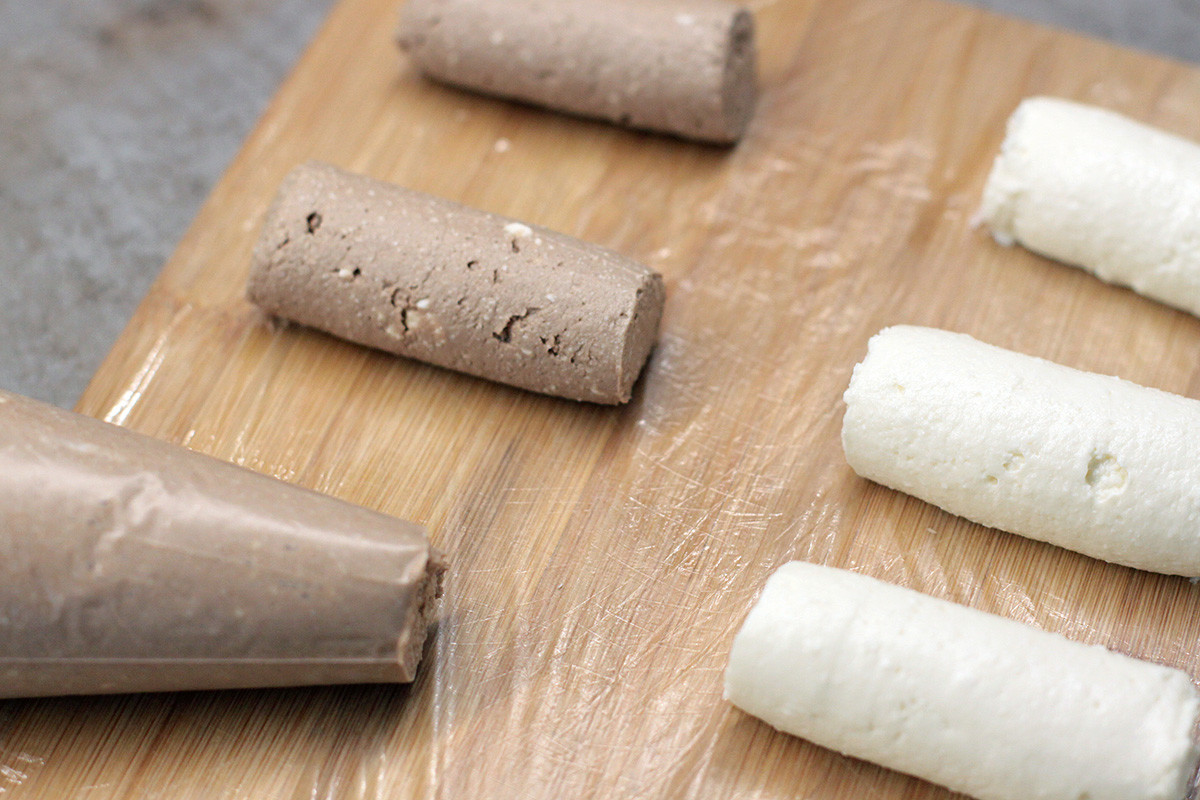
4. There are at least 2 more ways of making the bars: for the most authentic rectangular shape use small bar molds and fill them with curd paste. If you don’t have such a mold, then don’t worry: you can use any type of small-sized molds from along your cooking equipment, such as cupcake molds or so. Moreover, feel free to form bars with your hands – they won’t be that smooth-faced, but the taste will be just as good.
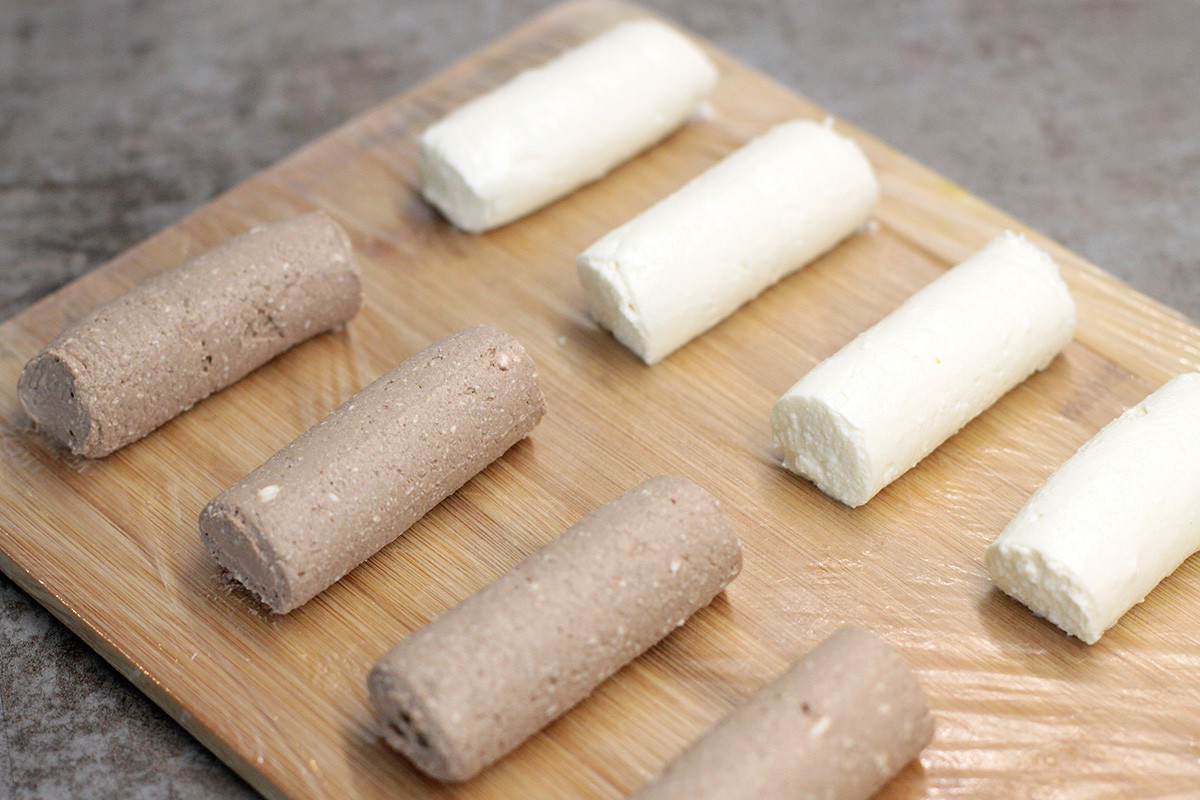
5. While the bars are being refrigerated, you have plenty of time to make the glaze: melt chocolate on a bain-marie, add oil and stir with a spatula until very smooth and glossy. It should be quite hot and runny right before glazing.
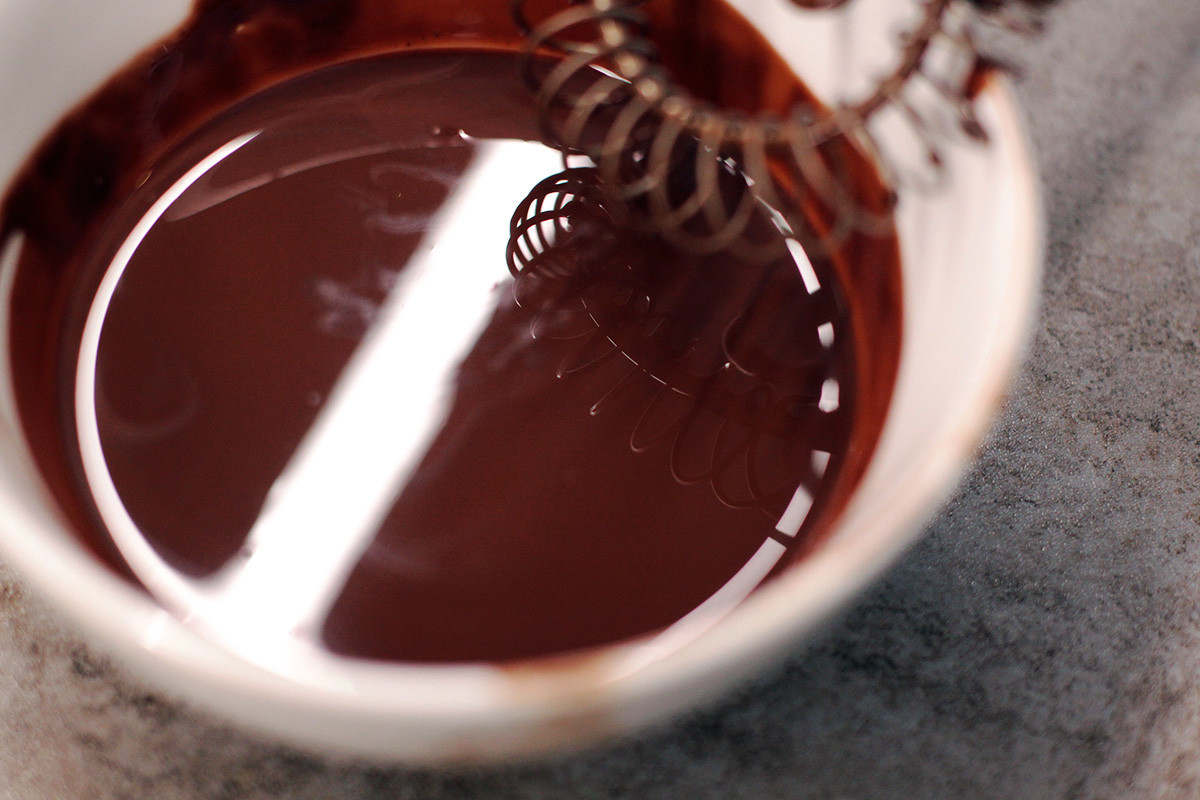
6. When the bars are completely set, take them out of the refrigerator. Working with one at a time, string a cold curd bar on a skewer or a toothpick and dip in hot glaze or just cover from all sides using a tablespoon. You’d best to do it quite fast, and you’ll notice how the chocolate instantly sets on a cold bar surface.
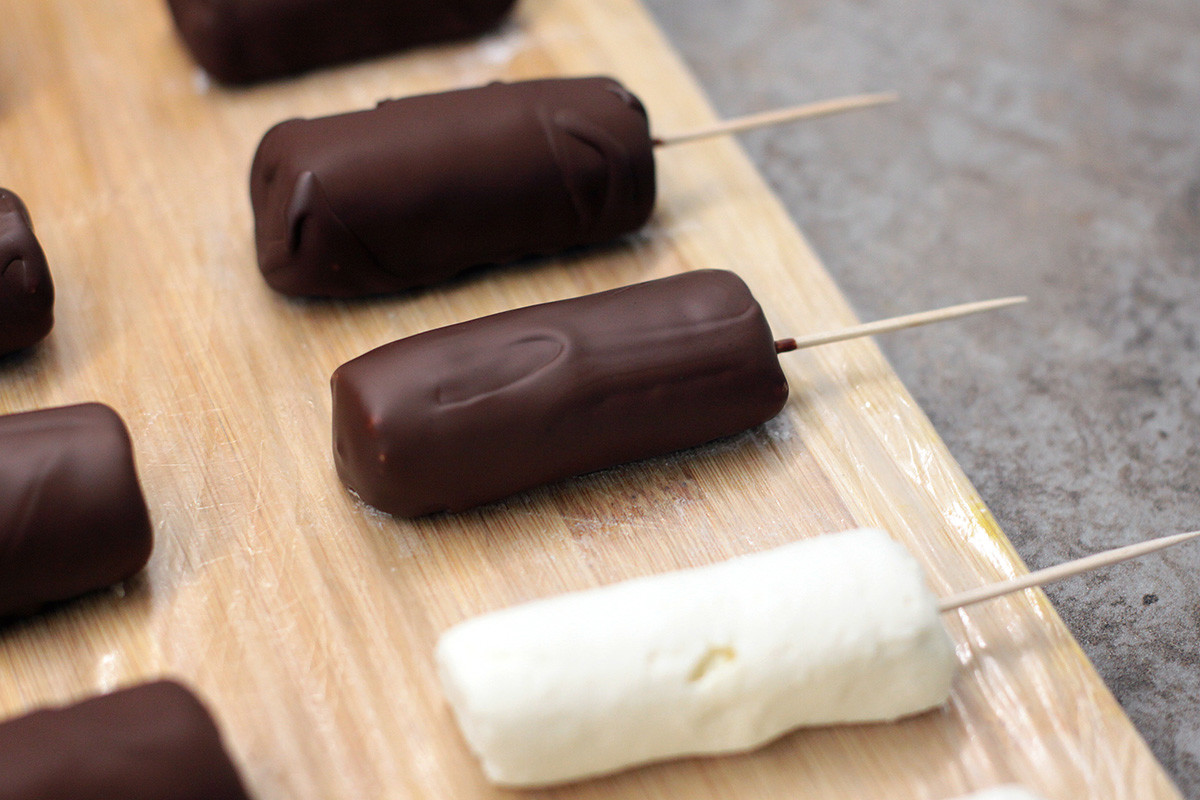
7. Repeat to make all the other bars: put them on a board again and leave in the refrigerator for another 20 minutes so that the chocolate fully sets. I wrap each bar in a piece of foil and leave like that.

8. Let the bars thaw in the fridge for around half an hour before serving, and enjoy. Priyatnogo appetita!
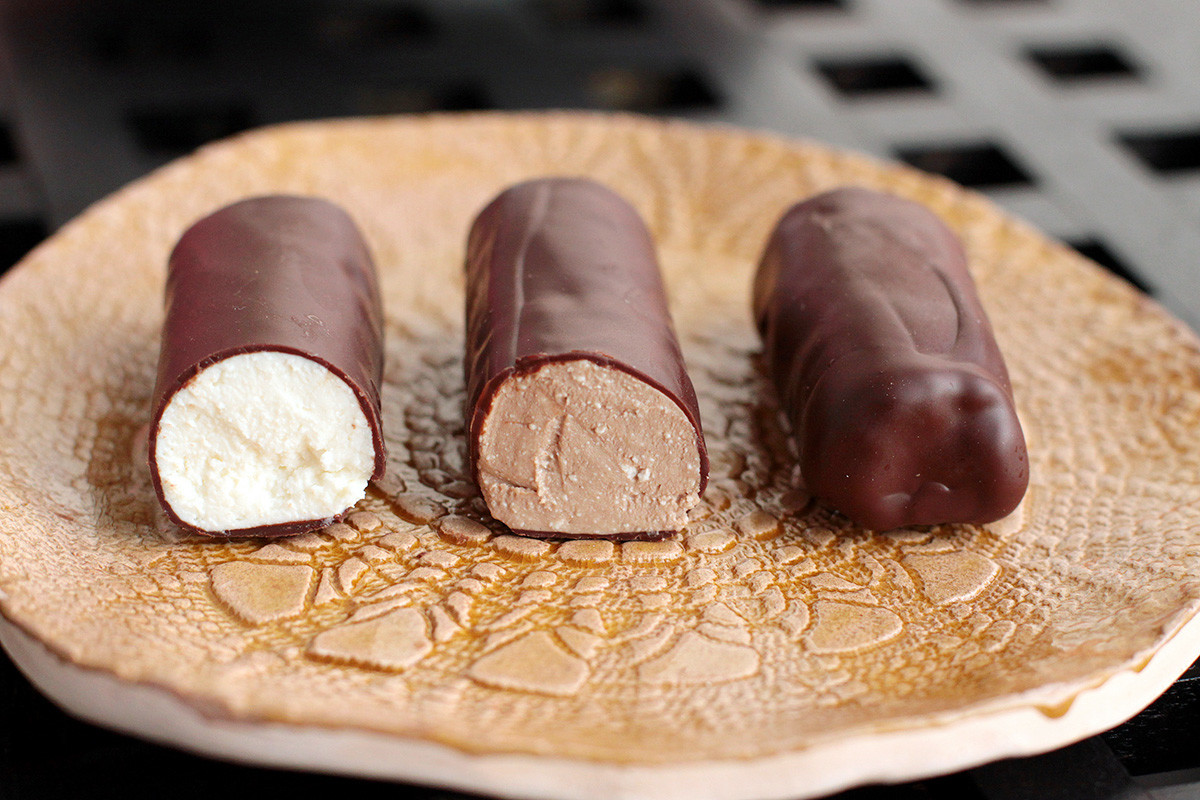
If using any of Russia Beyond's content, partly or in full, always provide an active hyperlink to the original material.
Subscribe
to our newsletter!
Get the week's best stories straight to your inbox